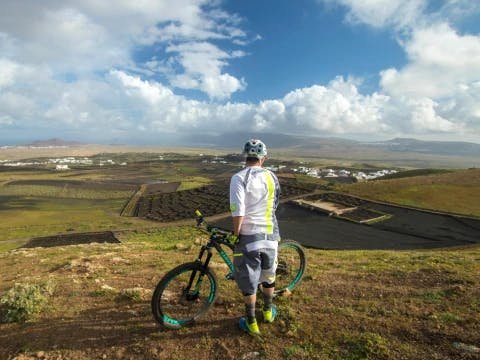How to train on a bicycle: the program to resume cycling training
One of the most complex moments for a cyclist is the resumption of training following a stop period. An example is the winter break, which usually lasts a couple of months, but the interruption could also be forced and due to other causes, such as the quarantine period.
In any case, it is essential to follow a correct bike training, so as to gradually get the body used to sports activity, without suffering injuries or physical pains.
Before understanding what the correct bike training is, you should know that the period of inactivity particularly affects two physiological abilities: aerobic endurance and muscle strength.
It takes 3 weeks of rest to lose some of the muscle strength, but also the ability to use oxygen to synthesize ATP. Therefore, to return to achieving the sports performance you had before the stop, you will need to follow a specific training for cycling, based on two key principles: gradualness and regularity.

Training with rollers, if you can't go outdoors, still allows you to slow down the process of losing aerobic resistance and muscle strength: in fact, this type of training is always recommended as preparation for cycling.
However, nothing can replace road training, which also allows you to not lose the conditional ability of balance. Therefore, if you are wondering how to train on a bicycle after quarantine or after a stop period, maybe because you are already thinking about how to prepare for your next bike trip, the only solution is to follow specific training tables and cards.
Training tables and cards for cycling
Now that you have the go-ahead to be able to get back in the saddle, do you already know which bike training program to follow?
There are many cycling training tables that you will find online, but it is important first of all to understand what your starting point is: are you a beginner? Are you going uphill? Do you use the racing bike?
No matter what your current and previous physical form is, you should bear in mind one rule: you can't restart thinking of covering the same distance and with the same intensity as you did before the break.
The key concept for any type of weekly cycling training is graduality: start without exceeding 80% of the previous stops and the intensity of the ride must be moderate. Only in this way can you test your body's reaction to sports activity. If for example during the stop period of the outings you did not train with the rollers, you could feel muscle pains from the first ride, or the classic pains the day after. This is absolutely normal, but you should give your body time to recover the effort.
Use the first 2-3 rides on the bike as a test and prefer many shorter outings, instead of a single long outing, in this way you will gradually accustom the body both in terms of aerobic resistance and muscle strength.
But now let's bring you a cycling training schedule that you can follow to fully resume your physical shape and then the tables for training for cycling uphill.
Beginners cycling training tables
Following the principle of progression, the tables for cycling training for beginners suggest dosing the resumption of training based on the length of the break.
Here is an example: if you have been stationary for 2 months, therefore from 5 to 8 weeks of stop, between 4 and 5 weeks are required to fully regain fitness.
Graduality must also be applied to the distance traveled: in the first 10 days do not exceed 33% of the km you covered before the break, from the 10th to the 20th day cover up to 50% of the distance, then subsequently reach 75% and finally, reach 100% at the end of the fourth week.
Now let's also look at cycling training for beginners in case the break is less than or greater than 2 months:
with a 1-month stop, it will take you 3 weeks to resume total mileage always following the 33% - 50% - 75% rule
with a stop longer than 2 months, it will approximately take 12 weeks to regain physical condition.
Even in the case of training for amateur cycling, it is advisable to go out more during the week, rather than a single outing, especially in the 33% period, because in this way you accustom your body to being in the saddle and you will feel less the pains the day after.
Specific training for uphill cycling
Are you a cyclist who loves hills? Indeed, it is precisely on the hills that comes the most fun part, but that also puts the body to the test more.
Training for uphill cycling must follow a specific path and as always gradual, in order to avoid overstraining the body. Remember however that after a long period of inactivity, it is advisable to first follow the table for cycling for beginners and only later, that for the hills.
The quality of a cyclist on hills depends on several factors, including posture, mental strength, without neglecting of course the reactivity, strength in the legs, and aerobic resistance.
This type of training acts on 3 areas:
resistance
strength
agility.
Regarding resistance, you can follow the classic SFR training (Ascent, Strength, Resistance), starting from a hill with a slight slope, where you will perform 6-8 repeats, each interspersed with 3 minutes of recovery.
The repeats uphill in cycling are the most effective training to improve your performance.

Training for racing bikes
Are you an athlete and would you like to practice cycling also at a competitive level? In this case, you will have to follow a complete preparation, which tests you on different types of route, from the fund to the ascent. The training for racing bikes, in addition to following gradualness and regularity as for all other cyclists, must also follow a seasonality that is usually divided into 4 phases:
preparation period
pre-competitive period
competitive period
download period at the end of the season.
Also training for beginner racing bikes must follow this seasonality, obviously what varies is the intensity of the trainings. If you use a racing bike, also, do not underestimate the importance of getting the body used to being on the bike and maintaining a correct posture: this also affects your sports performance.
Generally, if you want to approach the competitive world, we recommend that you avoid doing it yourself and entrust yourself to an expert trainer!




